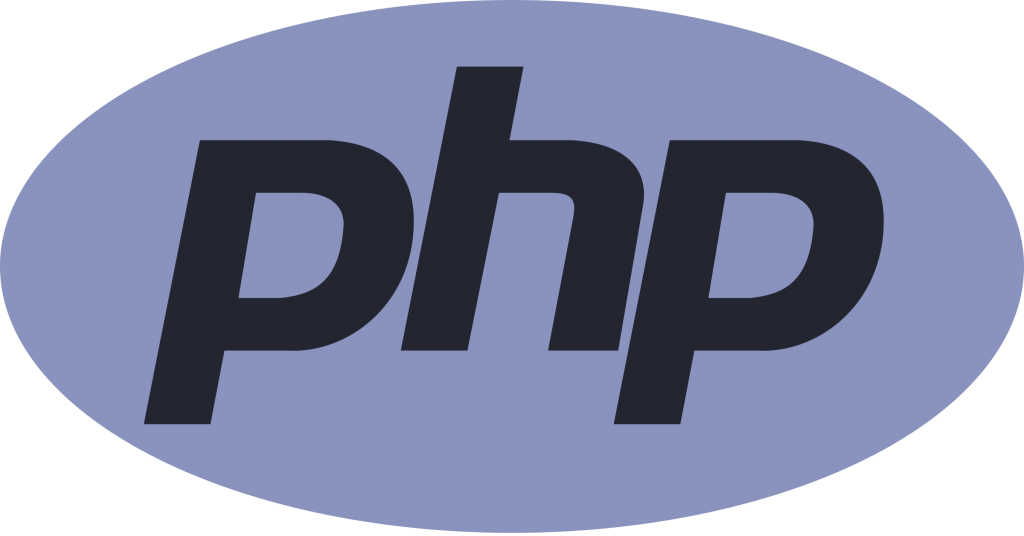Reading time: 13 minutes.
In the dynamic world of web development, JavaScript frameworks have become indispensable for building efficient, robust, and scalable web applications. With a myriad of frameworks available, each offering unique features and benefits, choosing the right one for your project can be a daunting task. This comprehensive guide aims to simplify this decision-making process by offering insights into some of the most popular JavaScript frameworks, their use cases, strengths, and weaknesses.

Understanding JavaScript Frameworks
What are JavaScript Frameworks?
JavaScript frameworks are collections of JavaScript code libraries that provide developers with pre-written code for routine programming features and tasks. These frameworks offer a structured and standardized way to build and manage web applications, allowing developers to focus on the unique aspects of their projects rather than on the underlying technical complexities.
Why Use a JavaScript Framework?
- Efficiency: Frameworks speed up the development process by providing a base of code to work from.
- Safety: Many frameworks have built-in security features that help protect against common web vulnerabilities.
- Cost-effective: Faster development and reduced need for troubleshooting save both time and money.
- Community Support: Popular frameworks have large communities, providing a wealth of resources, tutorials, and support.
Top JavaScript Frameworks
1. Javascript Frameworks: React
- Overview: Developed by Facebook, React is a declarative, efficient, and flexible JavaScript library for building user interfaces.
- Strengths: Strong community, high performance, reusable components.
- Best For: Single-Page Applications (SPAs), mobile applications (with React Native).
- Limitations: Learning curve for beginners, only covers the UI layers of the app.
2. Javascript Frameworks: Angular
- Overview: Maintained by Google, Angular is a platform and framework for building single-page client applications using HTML and TypeScript.
- Strengths: Two-way data binding, robust and well-structured, comprehensive solution.
- Best For: Enterprise-level applications, dynamic web applications.
- Limitations: Steep learning curve, can be overly complex for smaller projects.
3. Javascript Frameworks: Vue.js
- Overview: An open-source, progressive JavaScript framework for building user interfaces.
- Strengths: Lightweight, easy to learn, highly flexible.
- Best For: Single-Page Applications, interactive web interfaces.
- Limitations: Smaller community, less market share than React or Angular.
4. Javascript Frameworks: Node.js
- Overview: Not exactly a framework, but a runtime environment that allows you to run JavaScript on the server side.
- Strengths: Fast processing and execution, large community, extensive npm libraries.
- Best For: Real-time applications, server-side applications, streaming applications.
- Limitations: Callback hell, not suitable for CPU-intensive tasks.
5. Javascript Frameworks: Ember.js
- Overview: An open-source framework enabling developers to build scalable single-page web applications.
- Strengths: Convention over configuration, strong community, well-structured.
- Best For: Complex web applications, long-term projects.
- Limitations: Steep learning curve, less popularity.

Factors to Consider When Choosing Javascript Frameworks
- Project Size and Complexity: Larger, more complex projects may benefit from a more structured framework like Angular or Ember.js.
- Development Speed: If rapid development is a priority, frameworks like React or Vue.js might be more suitable.
- Community and Resources: A larger community can be a significant advantage in terms of resources and support.
- Learning Curve: Consider the team’s familiarity with the framework.
- Performance Requirements: For applications that require high performance, consider frameworks known for their speed and efficiency.
- Long-Term Maintenance: Think about the long-term maintainability of the application and the framework’s stability and evolution over time.
Case Study 1: Leveraging React for an E-commerce Site
Introduction
In the competitive world of e-commerce, the success of an online store heavily depends on the user experience it offers. React, known for its efficiency in building interactive user interfaces, was chosen for an e-commerce project aimed at delivering a seamless and dynamic shopping experience. This case study explores the challenges faced, solutions implemented, and the outcomes of integrating React into the e-commerce platform.
Project Background
The e-commerce site in question was facing several challenges with its existing setup. The user interface was static and sluggish, leading to a poor user experience. Product pages were slow to load, and the lack of dynamic content made the site feel outdated. The goal was to revamp the site with a focus on responsiveness, speed, and interactivity, all of which are React’s strengths.
Challenges
- Slow Performance: The existing website had performance issues, particularly in loading times and dynamic content updates.
- Scalability: The platform needed a solution that could scale with the increasing number of products and user interactions.
- User Experience: Enhancing the user interface to make it more engaging and responsive was critical.
- Integration with Backend Services: Efficient integration with existing backend services and databases was necessary for real-time data updates.
React Implementation Strategy
Choosing React
React’s component-based architecture made it an ideal choice for the project. Its ability to handle dynamic content changes efficiently without reloading the entire page (thanks to the virtual DOM) was particularly appealing. Additionally, React’s scalability and the strong community support provided the confidence needed for this overhaul.
Development Approach
- Component-Based Development: The site was broken down into reusable components (e.g., product cards, navigation bars, shopping carts), allowing for easier management and updates.
- State Management: Using Redux for state management helped in maintaining a consistent state across the application, which was crucial for features like the shopping cart and user preferences.
- Routing: React Router was implemented to manage navigation between different pages of the site seamlessly.
- Performance Optimization: Techniques like lazy loading, code splitting, and optimizing component re-renders were used to enhance performance.
Overcoming Challenges with React
- Improving Load Times: By implementing server-side rendering with React, the initial page load time was significantly reduced, improving the site’s performance and SEO.
- Dynamic Content: React’s efficient update and rendering system allowed for real-time updates on the product pages without needing to reload the entire page, enhancing the user experience.
- Scalability: React’s modular nature made it easy to add new features and handle an increasing number of products and users without a loss in performance.
- Backend Integration: React’s flexibility allowed seamless integration with various backend APIs for real-time data fetching and updating.
User Interface Enhancements
- Interactive Product Displays: Interactive elements like image carousels, zoom-in features, and dynamic filtering were added to product pages.
- Responsive Design: The UI was made fully responsive to ensure a consistent experience across devices.
- Live Search Feature: A live search bar with suggestions was implemented, making it easier for users to find products.
Results and Outcomes
- Improved Performance: The site’s performance metrics, such as load time and time to interactive, improved significantly.
- Enhanced User Experience: The new, dynamic interface led to an increase in user engagement and time spent on the site.
- Increased Conversion Rates: The improved user experience and performance led to an increase in conversion rates and sales.
- Scalability Achieved: The site was now better equipped to handle increased traffic and product listings.
Lessons Learned
- Importance of Component Design: Well-designed components were key to the project’s success, allowing for reusable and maintainable code.
- Performance Optimization: Continuous monitoring and optimization were crucial in maintaining a fast, responsive site.
- Community Resources: Leveraging the extensive React community resources and tools played a significant role in overcoming technical challenges.
Conclusion
The integration of React into the e-commerce site proved to be a resounding success. It not only addressed the initial challenges but also positioned the platform for future growth and enhancements. This case study exemplifies how choosing the right JavaScript framework, aligned with specific project needs, can lead to significant improvements in performance, user experience, and overall business outcomes.
Case Study 2: Leveraging Angular in Enterprise Applications
Background
In the world of enterprise applications, the challenges are as diverse as they are complex. These applications not only require a robust architecture to handle large volumes of data and traffic but also demand high levels of security, scalability, and maintainability. For this case study, we examine a large-scale enterprise application developed for a multinational corporation. The goal was to create a highly interactive, data-driven platform that could integrate seamlessly with existing back-end systems and provide a rich user experience.
The Challenge
The primary challenge in developing this enterprise application was managing its complexity. The application was envisioned to be a one-stop solution for various business operations, including data analytics, real-time collaboration, and resource management. This complexity demanded a framework that could offer:
- Scalability: To handle the increasing amount of data and users.
- Modularity: For maintaining and updating the application efficiently.
- Two-way Data Binding: To reflect changes in real-time across the application.
- Integration Capabilities: To seamlessly integrate with various back-end systems and databases.
- Rich User Interfaces: To provide an engaging and intuitive user experience.
Why Angular?
After evaluating several options, Angular emerged as the framework of choice. Its powerful features were well-aligned with the project’s needs:
- Comprehensive Solution: Angular is not just a library but a full-fledged framework that provides a strong foundation for building complex applications.
- TypeScript-based Development: TypeScript offers a more structured approach to JavaScript, which is crucial for large-scale projects. It enhances readability, maintainability, and catches errors early.
- MVVM (Model-View-ViewModel) Architecture: This architecture allows developers to work separately on the same sections of the application without stepping on each other’s toes, a crucial feature for a team of developers.
- Two-way Data Binding: Angular’s two-way data binding automates the synchronization between the model and the view components, making it easier to manage forms and complex UIs.
- Dependency Injection: Angular’s dependency injection system made it easier to create reusable and maintainable components.
Implementation Strategy
The development process was broken down into several phases:
- Requirements Gathering: Involving stakeholders to define the scope and objectives of the application.
- Architecture Design: Creating a scalable architecture that could accommodate future enhancements.
- Development: Adopting an Agile methodology, focusing on iterative and incremental development.
- Testing: Rigorous testing phases, including unit testing, integration testing, and end-to-end testing.
- Deployment and Integration: Ensuring seamless integration with existing systems and smooth deployment.
Overcoming Challenges
During the implementation, several challenges were encountered:
- Complex State Management: The application had complex state management needs due to its interactive nature. This was addressed using Angular services and RxJS observables for efficient state management across components.
- Performance Optimization: To handle large datasets without compromising performance, strategies like lazy loading, asynchronous operations, and efficient change detection were implemented.
- Security Concerns: Implementing robust security measures was critical. Angular’s built-in security features like DOM sanitization and XSS protection were leveraged, along with custom security protocols.
- User Experience (UX): To create a responsive and intuitive user interface, Angular Material was used. This provided a suite of pre-made components that were both aesthetically pleasing and functionally robust.
Results and Outcomes
The results of implementing Angular in this enterprise application were overwhelmingly positive:
- Improved Performance: The application could handle large-scale operations smoothly, thanks to Angular’s efficient data binding and rendering techniques.
- Enhanced User Experience: Users reported a significant improvement in their interaction with the application, citing its responsiveness and intuitive design.
- Ease of Maintenance: The modular nature of Angular made the application easier to maintain and update.
- Scalability: The application could easily be scaled to accommodate additional modules and user growth.
Lessons Learned
This project offered several valuable insights:
- The Importance of Planning: Thorough planning in the initial stages can significantly reduce challenges later in the development process.
- Agile Methodology: Adopting an Agile approach allowed for flexibility in development and better management of complexities.
- Community Support: Leveraging Angular’s extensive community for resources and troubleshooting proved invaluable.
Conclusion
Angular proved to be an excellent choice for this enterprise-level application. Its comprehensive nature, combined with powerful features like two-way data binding and TypeScript support, addressed the complex needs of the project effectively. This case study demonstrates Angular’s capability to handle large-scale, data-intensive, and complex applications, making it a suitable choice for enterprise-level solutions.

Case Study 3: Implementing Node.js in a Real-Time Chat Application
Introduction to the Project
In the realm of modern web applications, real-time features like instant messaging have become increasingly popular. These applications require a technology capable of handling live, bi-directional communication with high efficiency and low latency. For this case study, we will explore how Node.js, a JavaScript runtime environment, was adeptly used to build a scalable, real-time chat application.
The Need for Real-Time Functionality
The project’s primary goal was to develop a chat application that could support numerous users simultaneously, with the capability for real-time messaging, presence indicators, and instant notifications. The key challenges were ensuring minimal latency, managing concurrent connections, and maintaining a responsive user experience.
Why Node.js?
Node.js emerged as the ideal candidate for several reasons:
- Asynchronous, Event-Driven Architecture: Node.js operates on a non-blocking, event-driven I/O model, making it lightweight and efficient for real-time data-intensive operations.
- Single Language Across Stack: JavaScript runs both on the client and server-side, facilitating a more streamlined development process and reducing context switching.
- Strong Community and NPM Ecosystem: Node.js has a vast ecosystem of libraries and frameworks, making it easy to find tools and support for building complex applications.
- Scalability: Node.js is known for its ability to handle numerous simultaneous connections, a critical requirement for any real-time messaging system.
Developing the Chat Application
Phase 1: Setting Up the Environment
- Server Setup: We initialized a Node.js server using Express.js for handling HTTP requests and managing middleware.
- Socket.IO Integration: For real-time communication, Socket.IO, a JavaScript library for real-time web applications, was integrated. It allowed for bidirectional and event-based communication between web clients and servers.
Phase 2: Building Core Features
- User Authentication: We implemented user authentication using JSON Web Tokens (JWT) to manage secure access.
- Real-Time Messaging: The core feature of the app, users could send and receive messages instantly. Socket.IO enabled emitting and listening for messages, ensuring real-time communication.
- Group Chat Functionality: Beyond one-to-one messaging, the application supported group chats. Users could create groups, add members, and send messages to the entire group.
Phase 3: Enhancing User Experience
- Presence Indicators: The application displayed user status (online/offline) in real-time, enhancing the interactivity of the chat experience.
- Read Receipts and Typing Indicators: Features like read receipts and typing indicators were integrated to mimic the nuances of face-to-face conversations.
- Notifications: Real-time notifications for new messages and chat requests were implemented, ensuring users stayed engaged.
Handling Real-Time Data and Scalability
Node.js played a crucial role in handling concurrent connections and real-time data flow. Using its event-driven architecture, the server could handle multiple client requests simultaneously without straining the server resources.
Load Balancing and Scaling
- As the user base grew, we implemented load balancing to distribute the traffic across multiple instances of the application, ensuring no single server became a bottleneck.
- Node.js, coupled with a Redis store, was used to manage session data across multiple instances, ensuring seamless user experience during scaling.
Overcoming Challenges
Challenge 1: Managing High Traffic and Scalability
- Solution: Implemented clustering in Node.js to distribute the load across multiple CPU cores and used Redis for session management and storing temporary data.
Challenge 2: Ensuring Real-Time Performance
- Solution: Optimize server-side code for efficiency, and use Socket.IO’s efficient WebSocket protocol for communication, which is faster than traditional HTTP requests.
Challenge 3: Data Persistence and Storage
- Solution: Used MongoDB, a NoSQL database, for storing chat logs due to its flexible schema and fast read/write capabilities.
Lessons Learned
- Performance Optimization is Key: Continuous monitoring and optimization were crucial in maintaining high performance and low latency.
- Scalability Requires Forethought: Architectural decisions made early on significantly impacted the ability to scale the application efficiently.
- Community and Ecosystem are Invaluable: The vast resources and community support around Node.js greatly accelerated development and problem-solving.
Conclusion
This case study underscores the effectiveness of Node.js in building a real-time chat application. Its event-driven architecture, coupled with an extensive ecosystem, made it possible to create a highly scalable, efficient, and feature-rich application. The challenges encountered reinforced the importance of careful planning, especially in terms of scalability and performance optimization.
Node.js proved to be an exceptional choice for real-time applications, demonstrating its capability to handle simultaneous connections with minimal latency, making it an ideal choice for any
Javascript Frameworks: Conclusion
Choosing from JavaScript frameworks for your project depends on various factors, including project size, team expertise, and specific application requirements. While JavaScript frameworks like React and Vue.js are excellent for building dynamic user interfaces, Angular and Ember.js are better suited for large-scale applications. Node.js stands out for server-side development. It’s essential to evaluate each framework’s strengths and limitations in the context of your project needs to make an informed decision.





